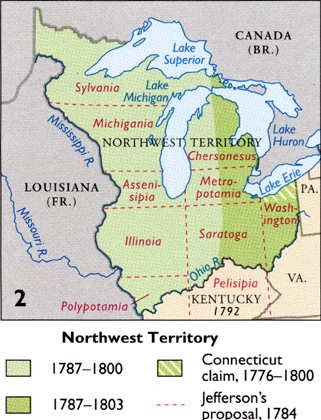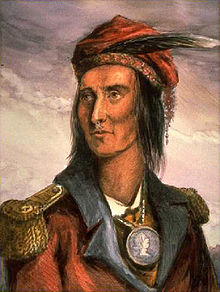Tecumseh fights for a pan-Indian homeland
Growing up in Canada only 10 miles or so from the American border, I’ve always had an ambivalent feeling about the anti-American sentiment expressed by many Canadians. My initial experience of the U.S. was Buffalo, New York, a decaying industrial city just over the border. Buffalo had grubby old factory buildings, real movie theatres, powerful rock and roll radio stations, and crumbled neighbourhoods we would walk through on the way back to the Peace Bridge.
We were taught in school that the last and only real conflict between the U.S. and Canada was the War of 1812-14. We learned of Isaac Brock, commander of the British troops before he was killed at the Battle of Queenston Heights. The site of “Brock’s Monument” near Niagara Falls was a favourite place for Sunday School picnics, and we kids would dutifully climb the stairs in the old monument to look out on the incredible Niagara River spread out below.
But this was virtually all I knew about the War of 1812-14. From the Canadian perspective it was all about protecting the northern part of the continent from being taken over by the Americans. Valiant stands against half-hearted “invasions” were repulsed and British North America remained, more or less, intact.
For the British the War of 1812-14 was more or less a sideshow to the Napoleonic Wars taking place in Europe. They were ambivalent about expending resources to protect their North American colonies. Their primary concern was maintaining a profitable trading relationship with the Americans. As John Ralston Saul points out in his book A Fair Country, Britain was not at all sentimental about its North American holdings. “These sorts of relationships are never special. They are about interests…” [p251]
For the Americans it was all about respect. The British were interfering with American trade, restricting their merchant vessels, and had the audacity to forcibly impress American sailors into the Royal Navy as though they were renegade British subjects.

The Old Northwest Territory
However, there was another aspect of the War of 1812-14 which many of us know very little about. There was a third interested party to this dispute (or a fourth if you want to consider the Canadians as distinct from the British.) This other group consisted of the native tribes who had been pushed into the area called the “Old Northwest”. This area stretched from the Ohio River in the south and east to the Mississippi River in the west and to the Great Lakes in the north.
For almost two hundred years the area had been under the influence of the French who built a series of trading forts along the main rivers and trade routes. After the French were defeated by the British in 1763 it passed to the British. And after American independence in 1776, it was ceded to the United States.
This evolution of this territory from “wilderness” to an outlet for American expansion was considered the ultimate betrayal by the native tribes who lived there. The natives had been betrayed by the British by ceding the land to the Americans. Then they were betrayed by the Americans who had initially acknowledged native sovereignty over the lands and then signed treaties with selected native leaders that cleared the way for American expansion.

Artist’s depiction of Tecumseh, c.1868
The state of Ohio had already been carved out of this territory by 1803, and more white settlers and new states were soon to come. But not before a native leader called Tecumseh had his say in the matter. Tecumseh was a Shawnee born in the Old Northwest and grew up during the time of the Revolutionary War and the Northwest Indian War (1785-1795).
Tecumseh was perhaps the first native leader who viewed North American natives as all part of one people – in effect, the first “pan-Indian” leader. His grand vision was for the establishment of a North American native homeland in the Northwest Territory where natives would have sovereignty over their own territory. This idea had been floated for some years before, but had been abandoned by most after the British ceded the territory to the U.S.
The movie above, called We Shall Remain: Tecumseh’s Vision is part of the series presented on PBS called American Experience. This presentation depicts Tecumseh’s attempt to form and hold together a confederacy of many Indian nations for the purpose of establishing that native homeland. Things come to a head in 1812 when he joins the British in a last ditch attempt to defeat the U.S.
After some initial victories, and in particular after the death of the British commander Isaac Brock, the British and native cause suffered serious defeats. Tecumseh was killed in 1813 at the Battle of the Thames near present-day Chatham, Ontario.


